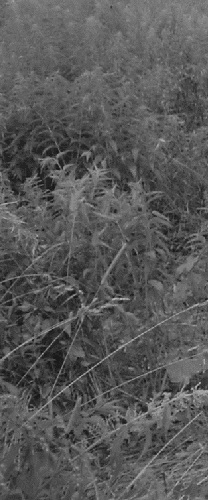About the subject. Palaeontology.
Illusion of rarity of fossil cladoceran records
In Caenozoic cladocerans are known for a long time (see review by Tasch, 1969), any reports on earlier findings appeared only in the 70th of 20th century. Since that time, the cladocerans were reported from Permian (Смирнов, 1970), Jurassic (Смирнов, 1971) and, (based on thousands of specially well-preserved and numerous specimens) from the Jurassic/Cretaceous boundary (Smirnov, 1992). To date, the cladocerans are regards as an antique group, probably, of mid-Palaezoic origin (Fryer, 1995). To the start of the 21nd century, fossil cladocerans were found in 4 Mesozoic localities (Смирнов, 1971; Fryer, 1991; Lai Xing-rong, 1990; Smirnov, 1992). It was accepted for a long time that their remains are rarely preserved (Dumont, Negrea, 2002). Subsequently it was found (Kotov, 2007, 2009a-b), that the illusion of such rarity appeared due to insufficient attention of the carciniligists to palaeontological collections. Most part of palaeo-localities, where the cladocerans were found in the first decade of the 21th century, are well-known for palaeontologists (Oppenheim, 1885; Brauer et al., 1889). Data on such localities are represented in a series of books by Russian investigators (Rasnitsyn, 1985, 1990; Zherikhon, 2003; Zherikhin et al., 2008). Probably, any Mesozoic and Palaezoic cladocerans could be found in the collections of fossils in different museums of the world.Palaeozoic records
First report on finding of a pre-Caenozoic Cladocera was made by Smirnov (1970) for Permian locality Karaungir (Saika Ridge, E Kazakhstan). But re-study of this material using SEM did not confirm its belonging to the cladocerans and even to arthropods.
Recently some microscopic crustaceans were found in the Devonian formation Rhynie in Scotland (i.e. known due to the higher plant Rhynia, a branchiopoda-like crustacean Lepidocaris, and many other well-preserved fossils) (Anderson et al., 2004). According to the authors, they could belong to the Cladocera. But the illustrations and descriptions are not informative enough to attribute such fossils to the Cladocera or any other crustacean group. Other paper (Womack et al., 2012) describes the Cladocera from the Carbon of Yorkshire, England, but no real evidences of their belonging to fossil Cladocera were represented. To our mind, they belong to “conchostracans", which were already diverse in Carbon (Tash, Jones, 1979; Orr, Briggs, 1999; Jones, Chen, Pei-ji, 2000).
Therefore, although the Cladocerans, most probably, existed in Palaeozoic, no adequate fossil records from this era are known.
Mesozoic records
Zherikhin (1985) wrote that some fossils from Irkutsk basin and Chulym-Yenisey basin belong to "Cladocera and other small-sized crustaceans". Sinitshenkova & Zherikhin (1996) concluded that the Cladocera were dominated in some types of Mesozoic water bodies. But such data were unknown for the carcinologists and requited a re-study by the Cladoceran experts. Fossil cladocerans were found in the Collection of the Palaeontological Institute of Russian Academy of Sciences at least in seven Mesozoic localities in Siberia and Mongolia (Kotov, Korovchinsky, 2006; Kotov, 2007, 2009a, b). In addition, in Ust’-Baley and four additional Jurassic localities some undetermined claws were found, which also could belong to the Cladocera.
Surprisingly, the most frequent fossil cladocerans were the representatives of Order Ctenopoda Sars, 1865 with relatively thin covers. In three different localities – Ust’-Baley, Chalunikha and Unda - a new family Leptodorosididae Kotov, 2007, belonging to a separate order Cryptopoda Kotov, 2007 was found.
A re-study of the family Prochydoridae (Котов, 2013) based on material of (Smirnov, 1992a) and additional samples from Khotont led to assignment of this family to a separate Order Proanomopoda Kotov, 2013. Representatives of the Anomopoda Sars, 1865 were found only in two localities.
Other Cretaceous records include ephippia of Simocephalus sp. (Fryer, 1991), Ceriodaphnia toutainensis Xing-rong, 1990, Ceriodaphnia sp. and Moina sp. (Anomopoda: Daphniidae) (Xing-rong, 1990).
Mesozoic fauna of the Cladocera was quite different from recent one, because it includes several extinct orders, families and genera. At the same time, since at least Juirassic/Cretaceous boundary the extinct taxa were co-existed with recent ones. Data on fossil cladocera agree with the hypothesis that recent cladocerans are relicts of more diverse fauna, remaining after the mass extinction of the latter (Korovchinsky, 2006).
Short notes ob the Caenozoic records
First records on Caenozoic cladocerans were made many years ago (Heydon, 1862, Hagen, 1870). The oldest Caenozoic findings are known from Eocene Messel palaeolake, S. Germany (Lutz, 1991). Most interesting fragments, i.e. thoracic limbs, were found in the fish coprolites (Richter, Wedmann, 2005; Richter, Baszio, 2006). According to the authors of the publication on Messel, the cladocerans belonged to “recent” taxa, such as Daphnia (D.) pulex, Daphnia (C.) magna and Moina cf. macrocopa. Also some remains of Bosminidae were found, but their exact determination is impossible. Eocene-Oligocene ephippia of Daphniidae were found in Western Europe, USA (Dickinson, Swain, 1967; Frey, 1964) and China (Yixin, 1995, Xing-rong, Ying-pei, 1987).
Literature on Quaternary cladocerans is quite extensive, because this group is one ofmain objects of palaeoecological reconstructions (See Smirnov, 1984, 2010). In the majority of publication there is no information on any differences of fossil taxa from recent. For example, the ephippia and mandibles of Daphnia, determined as belonging to D. studeri, were found in the deposits with age of 130000 years in East Antarctic, such records confirm that at that time some freshwater bodies existed in the Antarctic (Cromer et al., 2006).
Nevalainen et al., (2011) found an undescribed species of Alona in Holocene sediments from Svalbard. At the same time, Unapertura latens (Sarmaja-Korjonen et al., 2000) initially described from cores in some Scandinavian lakes, subsequently was found in recent water bodies (Nevalainen, 2008). In general, the morphological approach does not reveal any changes in the faunal composition of the Cladocera during Holocene.
In Tertiary and Quaternary sediments, the Cladocerans are very common (see the Palaeolimnology Page).



